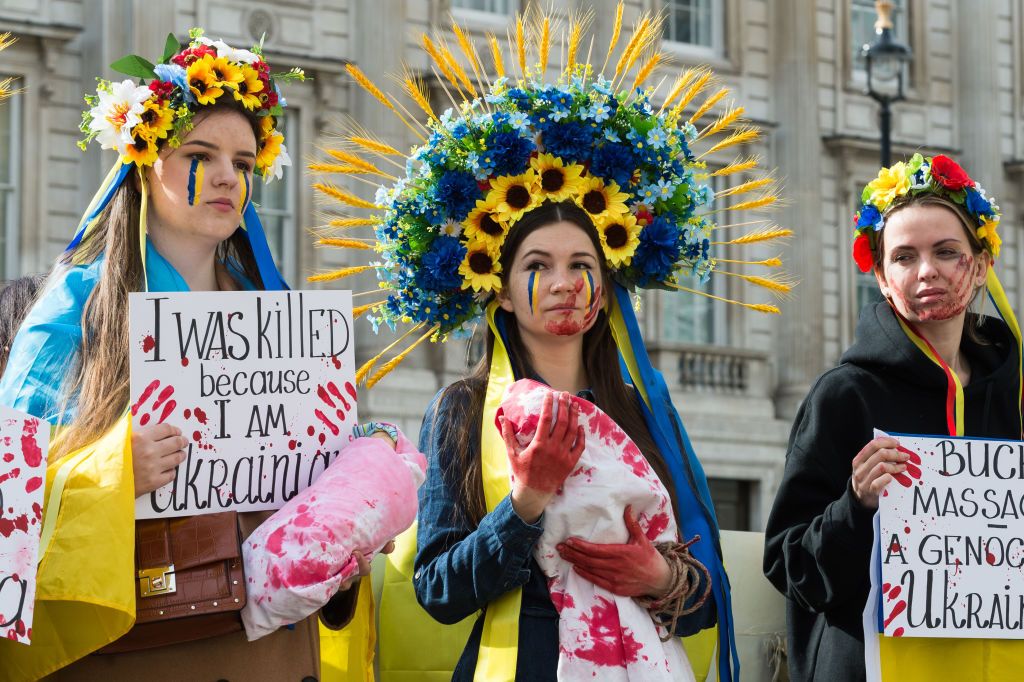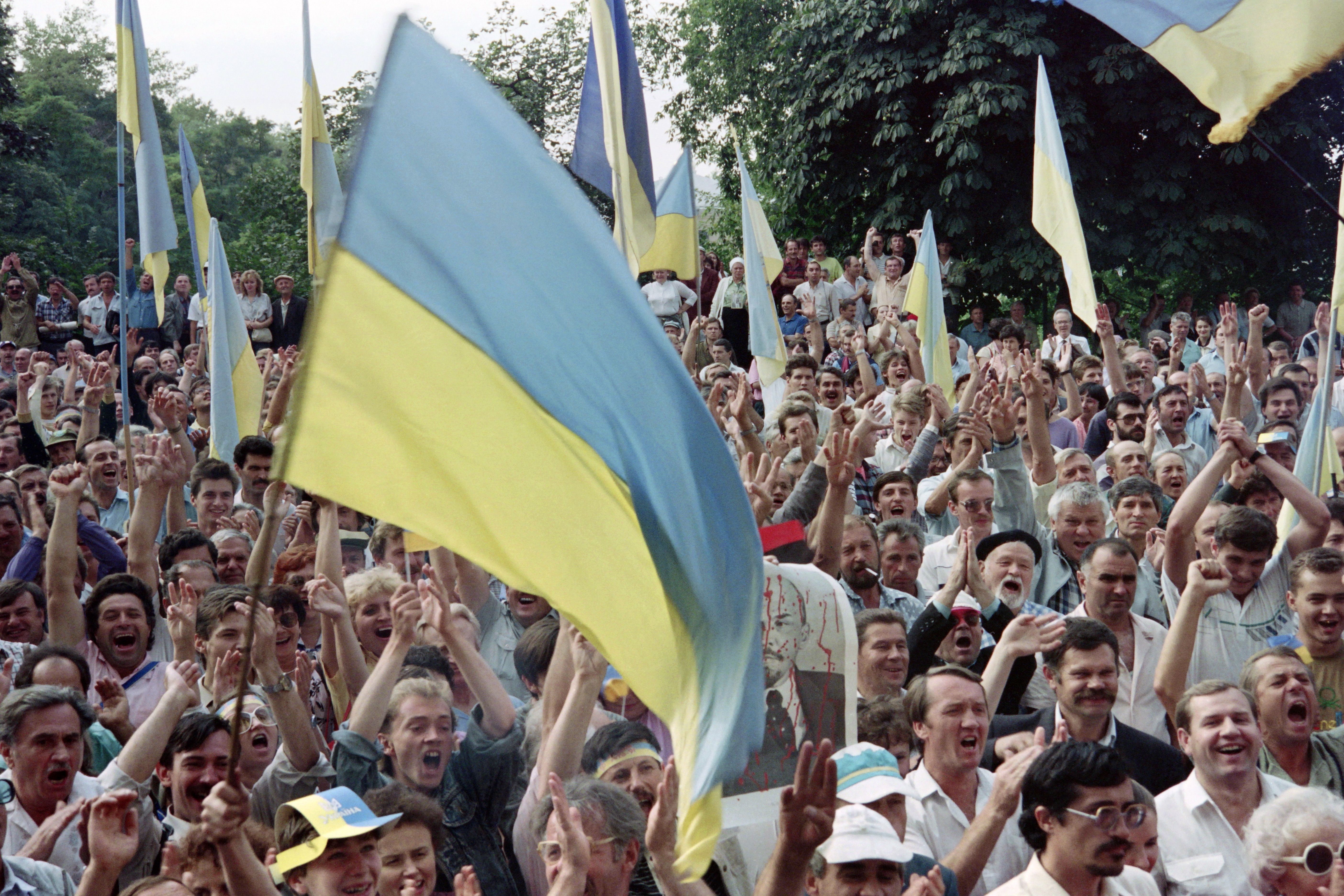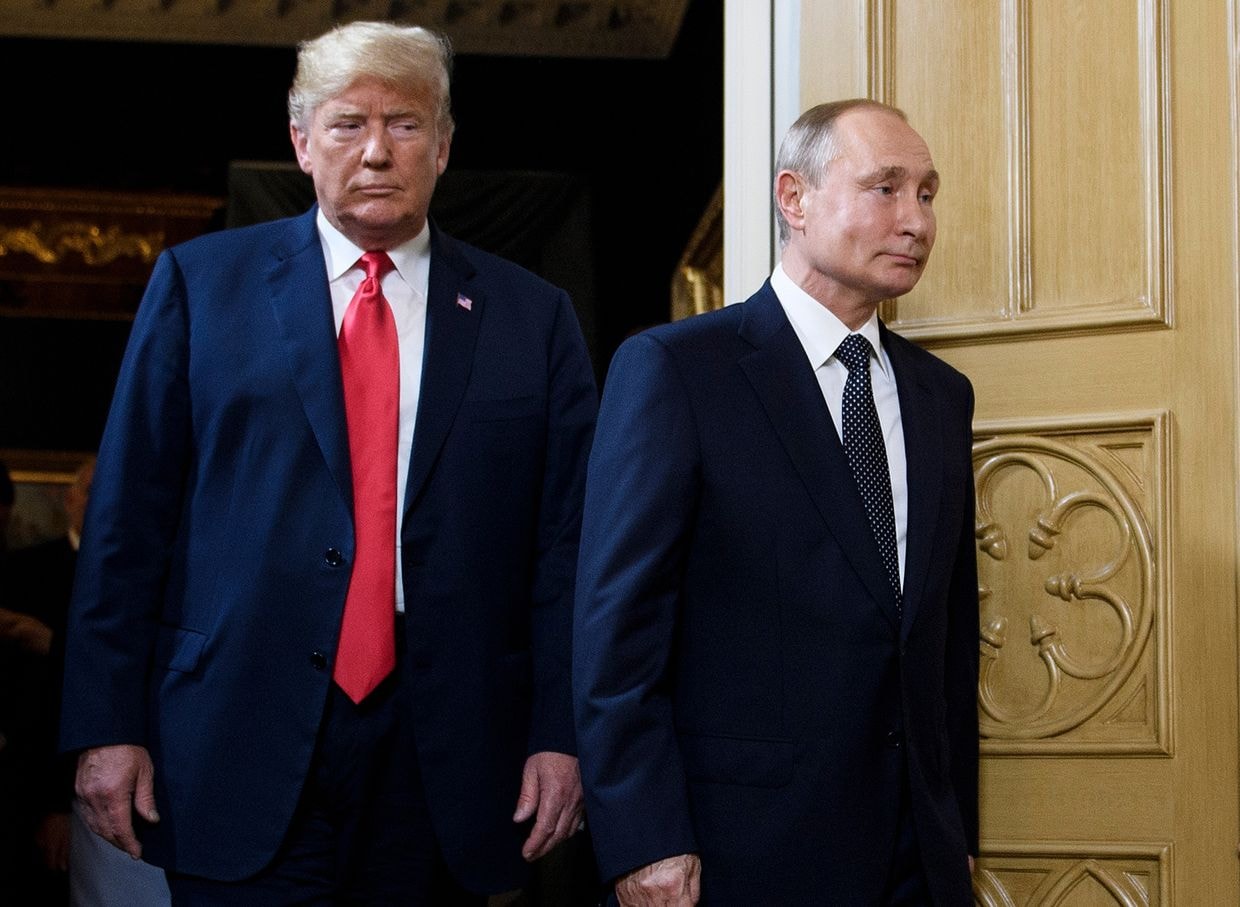George Monastiriakos: The only way to save Russia is to dismantle it

On Feb. 24, 2022, Russia, the world’s last remaining empire, a great power, and a permanent member of the United Nations Security Council, launched a full-scale invasion against Ukraine, its smaller neighbor and former colony, to overthrow its democratically elected government, annex its sovereign territory, and plunder its resources.
Russian President Vladimir Putin has redefined the legal concept of state sovereignty to include the self-confidence and collective will to “achieve every goal.” Whether they acknowledge it or not, the West’s century-long Russia “dilemma” has now become the international community’s problem.
To be clear: The Russian Federation is the third iteration of the Russian Empire. Spanning 11 time zones and comprising hundreds of ethnically, linguistically, religiously, and culturally distinct societies ruled by, from, and for the benefit of a small circle of kleptocrats primarily based in Saint Petersburg and Moscow, the Russian state has been unviable for centuries. Like empires of old, the only way to save Russia from itself is to dismantle it.
Time has not tempered Russia’s imperial ambitions and orientation. The Russian Federation, like Imperial Russia and the Soviet Union, pursues partnerships of convenience under the guise of diplomacy and periods of détente with its adversaries prior to waging war against them.
For example: Throughout the 1920s and 1930s, the Soviet Union signed “non-aggression pacts” with Lithuania, Finland, Latvia, Estonia, and Poland. It would later invade and attempt to annex every one of these states. Today, Garry Kasparov refers to this doctrine as “regrouping and reloading.”
Despite being nine decades apart, the parallels between the partition of Poland and the modern dismantlement of Ukraine are striking.
After the Holodomor in 1932-1933, during which the Soviet Union starved upward of 3 million Ukrainians through the failed communist policy of collectivization, Poland signed a “non-aggression pact” with the Soviet Union. The following year, Warsaw did the same with Berlin.
In August 1939, the Soviet Union and Nazi Germany concluded the Molotov-Ribbentrop Pact. Days later, Hitler’s and Stalin’s armies invaded the same Poland the Soviet Union and Nazi Germany had signed “non-aggression pacts” with a few years earlier. Within two years of dividing Poland between themselves, Nazi Germany and the Soviet Union would wage an existential war of historically unparalleled proportions against each other too.
Likewise, Russia has systematically dismantled the Ukrainian state since the collapse of the Soviet Union. In the 1994 Budapest Memorandum, Russia committed “to respect the independence and sovereignty and the existing borders of Ukraine” and “to refrain from the threat or use of force against the territorial integrity or political independence of Ukraine” in exchange for the nuclear weapons arsenal Ukraine inherited from the Soviet Union.
In the 1995 Sochi Accord, Russia confirmed the status of Crimea as part of Ukraine. In the 1997 “Treaty on Friendship, Cooperation and Partnership,” Russia recognized Ukraine as an “equal and sovereign state,” committed to respect its “territorial integrity and the inviolability of existing borders,” to “the peaceful settlement of disputes,” and to “the non-use of force or threat of force, including economic and other means of pressure.”
The Russian Federation violated all these agreements.
Over the years, weak Ukrainian leaders granted sovereignty-compromising concessions to Moscow. This included extending basing arrangements for Russia’s Black Sea Fleet in Sevastopol and mortgaging Ukraine’s independence through Russian energy blackmail. When Ukraine’s independent and democratic orientation shifted beyond the point of no return in 2014, however, Russia invaded Donbas and annexed Ukrainian Crimea.
Failing to “freeze the conflict” as it had previously done in Moldova, Georgia, and Nagorno Karabakh, Russia “regrouped and reloaded” after the Minsk Agreements. With Russia’s justification for the war refuted by none other than Wagner Group front man Yevgeny Prigozhin, the Kremlin’s Machiavellian lies aren’t worth the paper they’re written on. No wonder Russia launched its full-scale genocidal invasion of Ukraine in February 2022.

The West’s Russia “dilemma” – to save it or to watch it destroy itself – dates back more than a century. The West’s first opportunity to save Russia from itself came in 1917 when the Russian Empire collapsed during World War I. Seeking a short-term solution, American forces entered Russia to support the Czechoslovak Legion in Siberia and guard weapon supplies destined for the White Army.
Confronted with punishing Germany, the collapse of the Austro-Hungarian and Ottoman empires, redrawing the borders of Europe and the Middle East, the defeat of the White Army, and isolationism in America, however, the Allies lacked the political will and the resources to deal with an undertaking of this magnitude.
Instead, the Soviet Union expanded its empire to include parts of Eastern Europe, the Caucasus, and Central Asia. Then, like now, the only long-term solution to the West’s Russia “dilemma” was the dissolution of its empire.
The West also failed to save Russia from itself following the collapse of the Soviet Union in 1991. Like its first manifestation, the second iteration of the Russian Empire also spiraled into chaos. Fifteen new states emerged, including the Russian Federation. While wars erupted in Georgia, Nagorno Karabakh, Chechnya, Tajikistan, and Moldova, crime consumed Russia.
Nevertheless, constructivists celebrated the “end of history.” Realists were preoccupied with rogue states or terrorist groups obtaining nuclear weapons from Soviet stockpiles. Liberals promoted normalization with Moscow. Prosperity and development would democratize Russia. Economic interdependence with Europe would pave the path for Russia to join NATO and the European Union. International relations would evolve from competition between great powers to security challenges posed by non-state actors.
Managed by a circle of incompetent “apparatchiks” in Soviet times, law and order were eventually consolidated in the chaotic Russia of the 1990s by Putin. The gas flowed and business flourished as Imperial Russia transformed into the Russian Federation.
Despite bombing Chechnya and Syria back to the stone age, occupying Moldova and Georgia, and systematically dismantling Ukraine, the West continued to treat Russia as a normal state. Instead of promoting its democratic values and building resilient institutions, the West pursued a policy of appeasement toward Russia.
Now, Putin’s circle controls a gas station and the world’s largest nuclear weapons arsenal – using both to blackmail the same freedom-loving people of Europe who once sought to incorporate Russia into their free and prosperous community.
For too long, the West whitewashed Russian aggression at the expense of its core values and was humbled by history because of it. Having failed to meet the moment in 1917 and 1991, the West may have a third opportunity to save Russia from itself when it fails in Ukraine.
Unless Russia’s defeat is decisive, however, Putin, his successor, and the Russian people are likely to seek revenge against Ukraine. With hundreds of thousands of young men returning home in body bags or wounded, its land army decimated, its economy crippled by sanctions and export controls, and its former prestige evaporated, history suggests Russia will go through another period of “regrouping and reloading.”
Whether a defeated and isolated Russia follows the path of North Korea or Nazi Germany remains to be seen. While turning inward is feasible, it is more likely that Russia directs its aggression outward toward the scapegoats it blames for the failure of its so-called "special military operation" in Ukraine to begin with: the U.S., the U.K., Poland, and NATO.
While the era of empires expired generations ago, the stewards of the Russian state still haven’t moved on. The West’s century-long Russia “dilemma” may end with the war in Ukraine. Ideally, with a free and independent Ukraine liberating its temporarily occupied territories and joining NATO and the European Union, Russia paying for Ukraine’s reconstruction, and Putin’s circle being prosecuted for war crimes at The Hague.
The West’s Russia “dilemma” might also end another way: with Moscow using nuclear weapons in Ukraine, and NATO and China dividing Russia into their respective spheres of influence. One way or another, dismantling the world’s last empire is the only way to save Russia from itself.
Editor’s Note: The opinions expressed in the op-ed section are those of the authors and do not purport to reflect the views of the Kyiv Independent.















